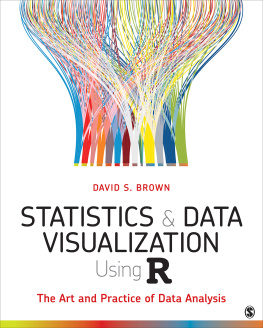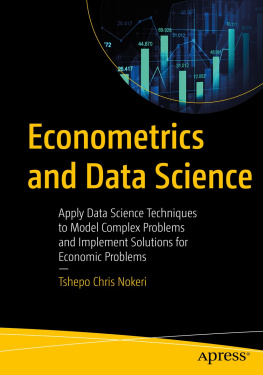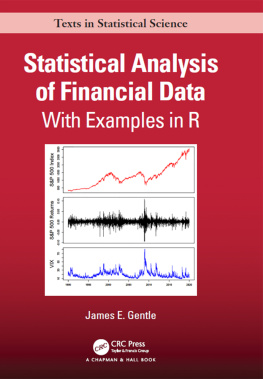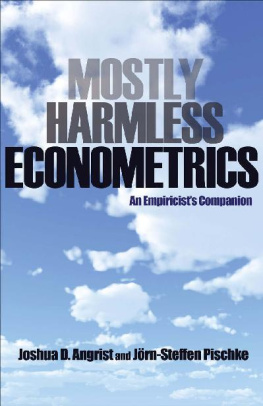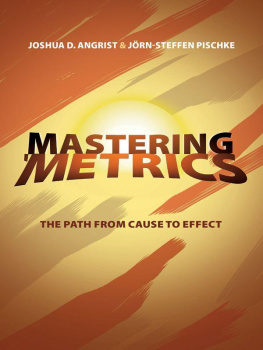Table of Contents
Copyright 2009 John Wiley & Sons Ltd, The Atrium, Southern Gate, Chichester,
West Sussex PO19 8SQ, England
Telephone (+44) 1243 779777
Email (for orders and customer service enquiries): cs-books@wiley.com
Visit our Home Page on www.wiley.com
All Rights Reserved. No part of this publication may be reproduced, stored in a retrieval system or transmitted in any form or by any means, electronic, mechanical, photocopying, recording, scanning or otherwise, except under the terms of the Copyright, Designs and Patents Act 1988 or under the terms of a licence issued by the Copyright Licensing Agency Ltd, Saffron House, 6-10 Kirby Street, London EC1N 8TS, UK, without the permission in writing of the Publisher. Requests to the Publisher should be addressed to the Permissions Department, John Wiley & Sons Ltd, The Atrium, Southern Gate, Chichester, West Sussex PO19 8SQ, England, or emailed to permreq@wiley.com or faxed to (+44) 1243 770620.
Designations used by companies to distinguish their products are often claimed as trademarks. All brand names and product names used in this book are trade names, service marks, trademarks or registered trademarks of their respective owners. The Publisher is not associated with any product or vendor mentioned in this book.
This publication is designed to provide accurate and authoritative information in regard to the subject matter covered. It is sold on the understanding that the Publisher is not engaged in rendering professional services. If professional advice or other expert assistance is required, the services of a competent professional should be sought.
Other Wiley Editorial Offices
John Wiley & Sons Inc., 111 River Street, Hoboken, NJ 07030, USA
Jossey-Bass, 989 Market Street, San Francisco, CA 94103-1741, USA
Wiley-VCH Verlag GmbH, Boschstr. 12, D-69469 Weinheim, Germany
John Wiley & Sons Australia Ltd, 42 McDougall Street, Milton, Queensland 4064, Australia
John Wiley & Sons (Asia) Pte Ltd, 2 Clementi Loop #02-01, Jin Xing Distripark, Singapore 129809
John Wiley & Sons Canada Ltd, 6045 Freemont Blvd. Mississauga, Ontario, L5R 4J3 Canada
Wiley also publishes its books in a variety of electronic formats. Some content that appears in print may not be available in electronic books.
Library of Congress Cataloging-in-Publication Data
Koop, Gary.
Analysis of economic data / by Gary Koop.3rd ed.
p. cm.
Includes bibliographical references and index.
ISBN 978-0-470-71389-1 (pbk.)
1. Econometrics. I. Title.
HB141.K644 2009
330.015195dc22
2008049827
British Library Cataloguing in Publication Data
A catalogue record for this book is available from the British Library
ISBN 978-0-470-71389-1 (PB)
ISBN 978-1-119-95890-1 (epdf)
ISBN 978-1-119-95891-8 (epub)
ISBN 978-1-119-95892-5 (mobi)
To Lise
Preface to the Third Edition
I am happy to say that in the years since the second edition was published, Analysis of Economic Data has continued to be moderately successful. In writing the third edition I have tried to build upon this success. I have made no major changes in style or content in the new edition. This book is still intended to teach the basic tools of the applied economist without involving complicated econometric theory. However, I have made numerous minor changes. More empirical examples have been added (including more empirical project topics) and here and there new important methods have been added (for example, the Johansen test for cointegration has been added to Chapter 11). Most of the changes to the previous edition have arisen out of the realization that, although the book has been used primarily in economics courses, it is also being used in an increasing number of business and finance courses. This has motivated many of the changes and, in particular, the addition of substantial new material on financial volatility (including ARCH and GARCH models).
In the prefaces to previous editions I thanked many people, including students, colleagues, reviewers and all the people at Wiley. I would like to thank them all again for their assistance.
Preface to the Second Edition
When writing the new edition of my book, I tried to take into account the comments of many colleagues who used the first edition, the reviewers (some anonymous) who Wiley persuaded to evaluate my proposal for a new edition as well as my personal experience. With regards to the last, I have used the first edition of the book at three different universities (Edinburgh, Glasgow and Leicester) at three different levels. I have used it for a third-year course (for students who were not specialist economists and had little or no background in statistics), for a second-year course (for students with a fair amount of economics training, but little or no training in statistics) and for a first-year course (for students facing economic data analysis for the first time). Based on student performance and feedback, the book can successfully be used at all these levels. Colleagues have told me that the book has also been used successfully with business students and MBAs.
The second edition has not deleted anything from the first edition (other than minor corrections or typos and editorial changes). However, substantial new material has been added. Some of this is to provide details of the (minimal) mathematical background required for the book. Some of this provides more explanation of key concepts such as index numbers. And some provides more description of data sources. Throughout, I have tried to improve the explanation so that the concepts of economic data analysis can be easily understood. In light of the book's use in business courses, I have also added a bit more material relevant for business students, especially those studying finance.
I still believe in all the comments I made in the preface for the first edition, especially those expressing gratitude to all the people who have helped me by offering perceptive comments. To the list of people I thank in that preface, I would like to add the names Julia Darby, Kristian Skrede Gleditsch and Hilary Lamaison and all my students from the Universities of Edinburgh, Glasgow and Leicester.
Preface to the First Edition
This book aims to teach econometrics to students whose primary interest is not in econometrics. These are the students who simply want to apply econometric techniques sensibly in the context of real-world empirical problems. This book is aimed largely at undergraduates, for whom it can serve either as a stand-alone course in applied data analysis or as an accessible alternative to standard econometric textbooks. However, students in graduate economics and MBA programs requiring a crash-course in the basics of practical econometrics will also benefit from the simplicity of the book and its intuitive bent.
This book grew out of a course I teach at the University of Edinburgh entitled Analysis of Economic Data. Before this course was created, all students were required to take a course in probability and statistics in their first or second year. Students specializing in economics were also required to take an econometrics course in their third or fourth year. However, nonspecialist students (e.g. economics and politics or economics and business students) were not required to take econometrics, with the consequence that they entered their senior undergraduate years, and eventually the job market, with only a basic course in probability and statistics. These students were often ill-prepared to sensibly analyze real economic data. Since this is a key skill for undergraduate projects and dissertations, for graduate school, as well as for most careers open to economists, it was felt that a new course was needed to provide a firm practical foundation in the tools of economic data analysis. There was a general consensus in the department that the following principles should be adhered to in designing the new course:


